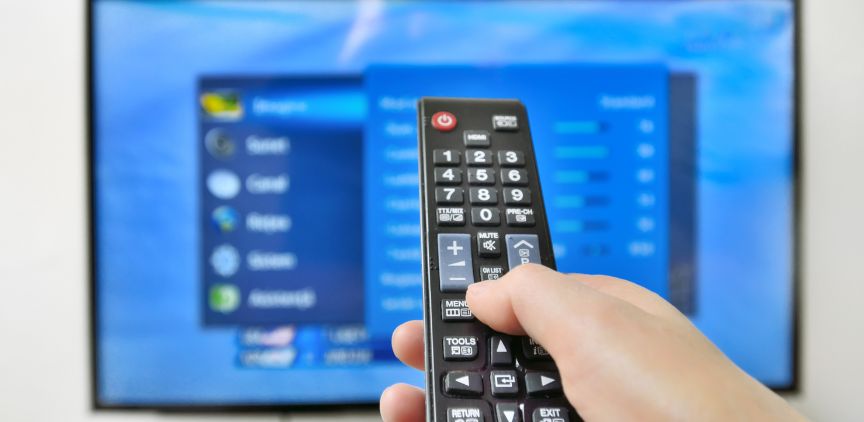Understanding your Smart TV for a Better User Experience
A Smart TV has internet connectivity, runs on an operating system, and supports a range of Smart TV apps; this gives you access to a wide range of streaming content that you can stream straight to the TV via your internet connection. Powerful processors, internet connectivity, and easy-to-navigate software make Smart TVs more like a tablet or smartphones than the old-fashioned TVs of the past. Most TVs sold today are Smart TVs, although they may differ in many ways.
How does a Smart TV work?
A home Smart TV doesn’t need an aerial, cable, or a separate streaming device. If you want to know how to use a Smart TV, it works when you connect it to the internet wirelessly or by using an Ethernet cable. An Ethernet cable provides you with a more stable connection. The stronger your connection, the better your viewing experience will be.
Smart TVs allow you to access 4K content from popular streaming services such as Netflix, Disney+, Apple TV, and Amazon Prime Video. Whether you want to download your favorite apps, watch Netflix series or stream a Spotify playlist, a smart TV can do it all and more. Popular video-sharing sites, such as YouTube, have their own smart TV apps for browsing and navigating.
If a smart TV isn’t getting a strong enough signal, there are various ways to fix the problem. You can adjust the placement of your router, tweak your settings or buy a Wi-Fi range extender. You may need to replace an old router with a new one.
Not all Smart TVs are the Same
Smart TV manufacturers include Hisense, Panasonic, Samsung, Philips, LG, Toshiba, Sony, Sharp, Vizio, and TCL. The Smart TVs they make are all different. Some, like Samsung and Vizio, use proprietary operating systems. Others rely on third-party software, such as Amazon Fire TV. Each operating system has its own features, apps, and compatibility with other devices.
- Some Smart TVs run faster, experience fewer bugs, and offer access to more streaming services.
- They all have different user interfaces, which can make some of them easier to operate than others.
- A growing number of Smart TVs include voice recognition tools like Amazon Alexa or Google Assistant. Viewers can use voice commands to switch channels and search for programs.
- Some Smart TVs have integrated smart home features and are compatible with other smart devices – smart lights, smart locks, and other sensors. Some feature dedicated dashboards that allow you to control all your connected devices.
- Some cheap Smart TVs claim to have Smart TV capabilities, but you may experience sub-par performance, limited app selection, and security issues. Value-priced brands are often slower to issue updates or add new apps.
Related Search Topics (Ads)
How to Choose the Best One
When choosing a Smart TV, you will need to consider various key factors such as cost, size, resolution, HDR, refresh rates, apps and integrations. There is no “best Smart TV” for everyone. It will depend on your personal preferences.
- Cost: Prices vary depending on factors such as the manufacturer and the model. The size, resolution, and features all impact the price.
- Size: Size is one factor that can add considerably to the price. Anything over 65 inches will be much more expensive. A good viewing experience with a smaller size will have you paying less.
- Resolution: You will come across both the 4K and 8K versions.; this refers to the number of pixels on the screen. An 8K version offers 160 pixels per inch, giving a very smooth, crisp image. There is more 4K content available than 8K, so an 8K is probably not worth the investment yet.
- HDR: The best Smart TVs come with HDR, which is picture-improving technology. It improves the color range and brings out detail in the dark and light parts of an image.
- Refresh rate: Smart TVs offer refresh rates of 60Hz or 120Hz; this refers to the number of times the image resets per second. The higher the refresh rate, the less blurry the viewing experience will be, which is great for watching sports but not for watching movies. Keeping the refresh rate at 60Hz is best for most content.
- Apps: The main purpose of your Smart TV is for entertainment. All Smart TVs have pre-installed apps; you can also download additional ones from an app store. Not all Smart TVs support all apps, so your viewing preferences will be a primary consideration when making a choice. You will need to check installed apps and available apps to ensure your favorites are supported.
- Integrations: The ability to integrate with a variety of smart devices in your home and respond to voice commands is one of the compelling features of a Smart TV. You need to consider your devices and preferences when buying a Smart TV that integrates with a specific platform.
Who Should Buy a Smart TV?
Anyone who needs a TV should consider going for a Smart TV. You are unlikely to find a TV today that doesn’t have some smart features. Smart TVs are becoming more affordable and offer you more value for your money. You can enjoy better image quality, more features, smart home integrations, and more.

